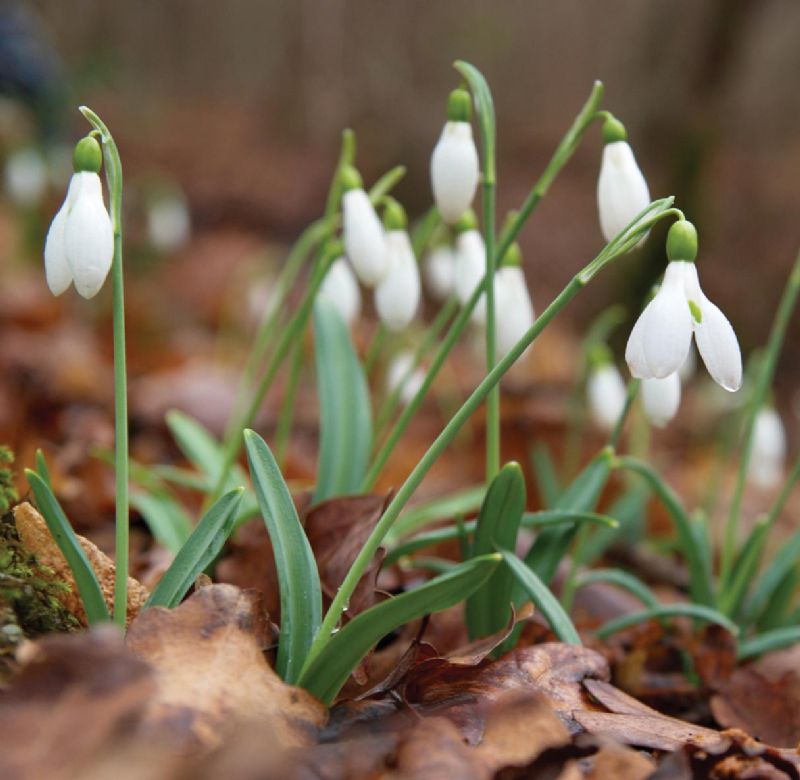- Home
- News, Articles & Reviews
We are hiring! Please click here to join our growing magazine delivery team in Gloucestershire!
Areas
Pets & Wildlife
Archive

Warm winter colour
All Areas > Pets & Wildlife > Wildlife Matters
Author: Dorothy Glen, Posted: Monday, 18th December 2023, 09:00
Is there a better mix of colour on a crisp winter’s day than yellow, white and purple? A brisk walk through the woods in January might reveal the first flowers of the new year, with winter aconites, crocuses and snowdrops making their bold appearances.
Aconites crop up in clusters under trees. A member of the buttercup family, their sunny yellow flowers are framed by a collar of deep green leafy bracts. They take advantage of the bare trees in winter, flowering at the time of year when the most sunlight will reach the woodland floor, and die back soon after flowering when the trees begin to leaf up again.
Their rich colours give bold contrast to cool winter tones
Crocuses are frequently used to add early colour to parkland and public gardens. They can also be found in their natural habitats of woodland, scrubland and meadows. I really enjoy seeing crocuses emerge, sometimes pushing through a blanket of snow in order to reach the thin winter sunshine. Their rich colours – my favourite being the purple variety with deep orange centres – give bold contrast to the cool winter tones and again remind us that warmer weather is on its way.
Dainty, delicate flowers
Perhaps our most iconic early flower is, of course, the snowdrop. The flowers themselves are dainty and delicate, and nod cheerfully in the breeze. They remind me of a phrase in one of my daughter’s picture books, which refers to daisies as ‘a bank of tiny ghosts’. I think that suits snowdrops rather well too.
Traditionally, snowdrops are seen as a symbol of hope, as the early flowers are one of the first indicators of spring. We are spoiled for choice in Gloucestershire with lots of places to see large displays of snowdrops, including Painswick Rococo Garden, Cerney House Gardens, Batsford Arboretum, Stroud’s Museum in the Park, and many more. These local attractions are home to millions of the pretty white jewels, which bloom in January and February.
A vital source of nectar for newly emerged bumblebees
These three early-flowering plants are fuelled by their underground food stores: aconites grow from tubers, crocuses from corms, and snowdrops from bulbs. As well as being attractive, they can be a vital source of nectar for newly emerged bumblebees.
Interestingly, none of them are native to the UK, having been brought over from mainland Europe. However, they have all been here for such a long time that they are well-established and beloved bursts of colour. Winter and early spring wouldn’t be the same without them.Other Images
Copyright © 2025 The Local Answer Limited.
Unauthorized use and/or duplication of this material without express and written permission from this site's author and/or owner is strictly prohibited. Excerpts and links may be used, provided that full and clear credit is given to The Local Answer Limited and thelocalanswer.co.uk with appropriate and specific direction to the original content.More articles you may be interested in...


© 2025 The Local Answer Limited - Registered in England and Wales - Company No. 06929408
Unit H, Churchill Industrial Estate, Churchill Road, Leckhampton, Cheltenham, GL53 7EG - VAT Registration No. 975613000You are leaving the TLA website...
You are now leaving the TLA website and are going to a website that is not operated by us. The Local Answer are not responsible for the content or availability of linked sites, and cannot accept liability if the linked site has been compromised and contains unsuitable images or other content. If you wish to proceed, please click the "Continue" button below:




